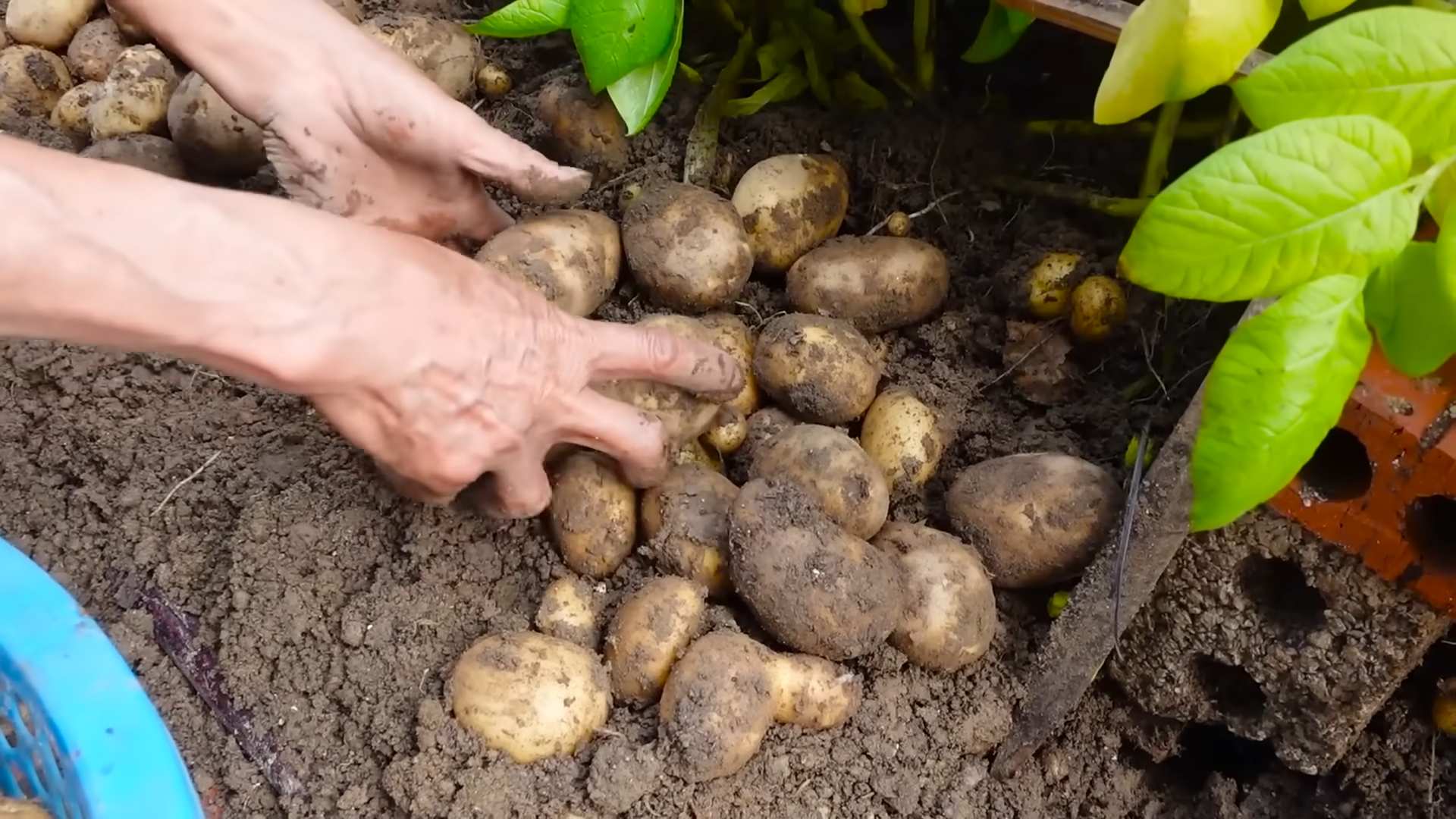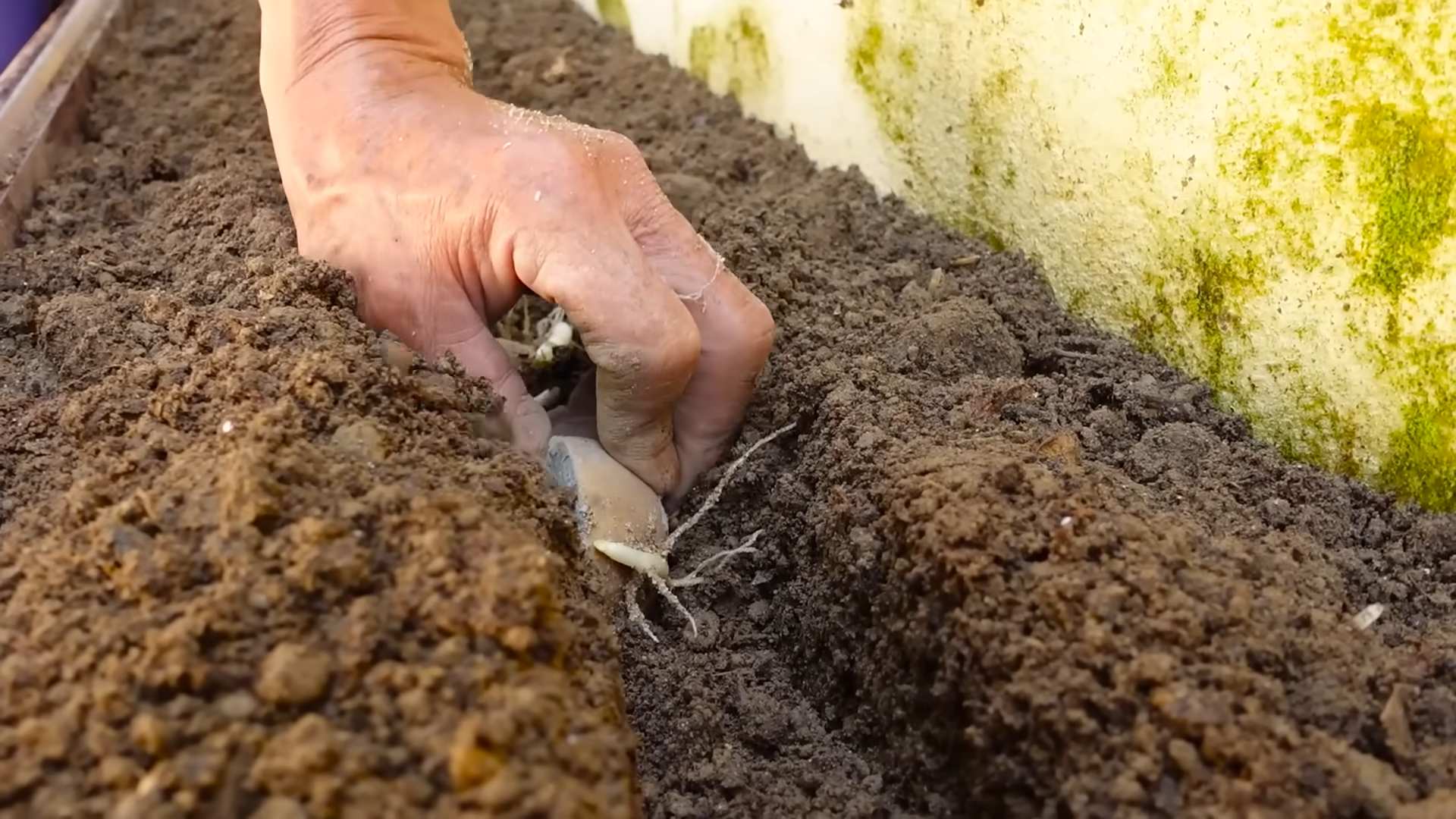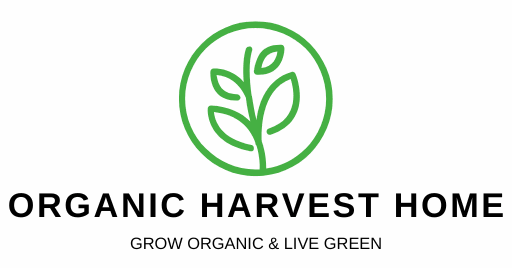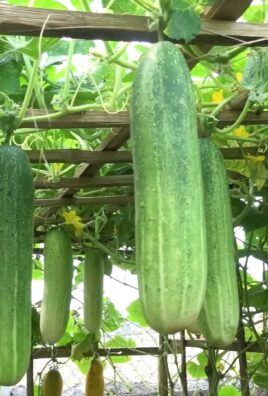Grow Potatoes for Big Harvest and imagine the satisfaction of digging up your own homegrown spuds! Forget those bland, store-bought potatoes – we’re talking about flavorful, nutrient-rich potatoes bursting with freshness, straight from your backyard. For centuries, potatoes have been a staple crop, fueling civilizations and providing sustenance across the globe. From the Andes Mountains, where they were first cultivated, to the Irish potato famine, the humble potato has a rich and complex history.
But you don’t need a sprawling farm to enjoy the benefits of growing your own. Even if you have limited space, you can still grow potatoes for big harvest with a few clever DIY tricks and hacks. In this article, I’m going to share some of my favorite and easy-to-follow methods for maximizing your potato yield, whether you’re gardening in containers, raised beds, or directly in the ground.
Why bother with the effort? Because nothing beats the taste of freshly harvested potatoes, and knowing exactly where your food comes from is incredibly rewarding. Plus, growing your own potatoes is a fantastic way to reduce your grocery bill and connect with nature. So, grab your gardening gloves, and let’s get started on your journey to a bountiful potato harvest!

Grow Potatoes in a Bag: A Bountiful Harvest from a Small Space!
Hey there, fellow gardening enthusiasts! Are you dreaming of digging up a mountain of homegrown potatoes but think you don’t have the space? Well, I’m here to tell you that you absolutely can grow a fantastic potato crop, even if you only have a balcony or a small patio. The secret? Growing potatoes in a bag! It’s a super fun, easy, and rewarding project, and I’m going to walk you through every step.
What You’ll Need: The Potato Powerhouse Toolkit
Before we dive in, let’s gather our supplies. This is what you’ll need to create your potato-growing masterpiece:
* A Large Grow Bag: Look for a sturdy grow bag that’s at least 20 gallons in size. Fabric grow bags are ideal because they allow for good drainage and aeration. I’ve had great success with 25-gallon bags.
* Seed Potatoes: These aren’t your regular grocery store potatoes! Seed potatoes are specifically grown for planting and are certified disease-free. You can find them at your local garden center or online. Choose a variety you love to eat! I personally love Yukon Gold for their creamy texture and fingerling potatoes for their unique shape and flavor.
* Potting Mix: A good quality potting mix is essential. Avoid using garden soil, as it can be too heavy and compact in a container. I recommend a mix that’s well-draining and contains compost for added nutrients.
* Compost: Speaking of compost, a generous amount of compost will give your potatoes a boost. It provides essential nutrients and helps retain moisture.
* Fertilizer (Optional): While compost is great, you can also supplement with a balanced organic fertilizer specifically formulated for vegetables.
* Watering Can or Hose: You’ll need a way to keep your potatoes well-hydrated.
* Gardening Gloves: Protect your hands from dirt and potential irritants.
* A Sunny Spot: Potatoes need at least 6-8 hours of sunlight per day.
Step-by-Step: From Seed to Spud-tacular Harvest
Alright, let’s get our hands dirty! Here’s how to grow potatoes in a bag:
1. Prepare Your Seed Potatoes: Sprouting for Success
* Chitting (Optional but Recommended): This process encourages your seed potatoes to sprout before planting, giving them a head start. About 2-3 weeks before planting, place your seed potatoes in a cool, bright location (but not direct sunlight). Egg cartons work great for this! You’ll notice small sprouts, called “eyes,” starting to emerge.
* Cutting (If Necessary): If your seed potatoes are large (bigger than an egg), you can cut them into smaller pieces, ensuring each piece has at least 2-3 “eyes.” Let the cut pieces dry for a day or two to callous over, which helps prevent rotting. I usually don’t cut mine unless they are exceptionally large.
2. Planting the First Layer: Building the Foundation
* Fill the Bag: Start by adding about 4-6 inches of potting mix to the bottom of your grow bag. Mix in a generous amount of compost.
* Plant the Seed Potatoes: Place 3-4 seed potatoes on top of the soil, spacing them evenly. Make sure the “eyes” are facing upwards.
* Cover the Potatoes: Cover the seed potatoes with another 4-6 inches of potting mix and compost. Water thoroughly.
3. The “Hilling” Process: Encouraging More Potatoes
This is where the magic happens! “Hilling” is the key to maximizing your potato harvest.
* Wait for Growth: As the potato plants grow, they’ll start to emerge from the soil. Wait until the stems are about 6-8 inches tall.
* Add More Soil: Cover the stems with more potting mix and compost, leaving only the top 2-3 inches of the plant exposed. This encourages the plant to produce more potatoes along the buried stem.
* Repeat: Continue this process every 1-2 weeks as the plants grow taller, until you reach the top of the bag. Always water thoroughly after each hilling. I usually hill about 3-4 times during the growing season.
4. Watering and Feeding: Keeping Your Potatoes Happy
* Watering: Potatoes need consistent moisture, especially during tuber formation. Water deeply whenever the top inch of soil feels dry. Avoid overwatering, as this can lead to rot. I usually water every 2-3 days, depending on the weather.
* Fertilizing (Optional): If you’re using fertilizer, follow the instructions on the package. I like to use a liquid fertilizer every few weeks to give my potatoes an extra boost.
5. Pest and Disease Control: Protecting Your Crop
* Monitor Regularly: Keep an eye out for pests like aphids, potato beetles, and flea beetles.
* Organic Solutions: If you spot any pests, try using organic solutions like insecticidal soap or neem oil. Handpicking pests is also an effective method.
* Disease Prevention: Ensure good air circulation around your plants to prevent fungal diseases. Avoid overhead watering, which can promote disease.
Harvest Time: The Grand Finale!
This is the moment we’ve all been waiting for!
* When to Harvest: You can start harvesting “new potatoes” (small, tender potatoes) about 2-3 weeks after the plants flower. For a full harvest of mature potatoes, wait until the foliage starts to die back and turn yellow. This usually happens about 80-100 days after planting.
* Harvesting: The easiest way to harvest potatoes from a bag is to simply tip the bag over and gently sift through the soil. You’ll be amazed at the bounty you uncover!
* Curing (Optional): To extend the storage life of your potatoes, you can cure them for a week or two. Spread the potatoes out in a cool, dark, and well-ventilated place. This allows the skins to harden, which helps prevent rot.
Troubleshooting: Common Potato Problems and Solutions
Even with the best care, you might encounter a few challenges along the way. Here are some common potato problems and how to address them:
* Potato Scab: This is a common soilborne disease that causes rough, scabby patches on the potato skins. It’s more prevalent in alkaline soils. To prevent potato scab, maintain a slightly acidic soil pH (around 6.0). You can also add sulfur to the soil to lower the pH.
* Early Blight: This fungal disease causes dark, circular spots on the leaves. To prevent early blight, ensure good air circulation around your plants and avoid overhead watering. You can also use a copper-based fungicide.
* Potato Beetles: These pesky beetles can quickly defoliate your potato plants. Handpicking them is an effective method, or you can use an organic insecticide like neem oil.
* Poor Potato Production: If your potato plants are growing well but not producing many potatoes, it could be due to a lack of nutrients or insufficient sunlight. Make sure you’re using a good quality potting mix and compost, and that your plants are getting at least 6-8 hours of sunlight per day.
Tips and Tricks for a Supercharged Potato Harvest
Here are a few extra tips to help you maximize your potato yield:
* Choose the Right Variety: Different potato varieties have different growth habits and yields. Do some research to find varieties that are well-suited to container gardening.
* Use a Potato Tower: If you want to get really ambitious, you can build a potato tower. This is a tall, cylindrical structure that allows you to grow even more potatoes in a small space.
* Rotate Your Crops: Avoid planting potatoes in the same bag year after year. This can help prevent soilborne diseases.
* Don’t Overcrowd: Make sure you’re not planting too many seed potatoes in each bag. Overcrowding can reduce yields.
* Be Patient: Growing potatoes takes time and patience. Don’t get discouraged if you don’t see results immediately. Just keep watering and fertilizing, and you’ll be rewarded with a bountiful harvest.
Growing potatoes in a bag is such a fun and rewarding experience. I hope this guide has inspired you to give it a try. Happy gardening, and may your potato harvest be plentiful!

Conclusion
So, there you have it! Growing your own potatoes for a big harvest isn’t just a gardening project; it’s a rewarding experience that connects you to the earth and provides you with delicious, homegrown food. We’ve explored the key steps, from choosing the right seed potatoes and preparing your soil to hilling techniques and pest control. By following these simple yet effective methods, you’ll be well on your way to enjoying a bountiful potato harvest.
But why is this DIY potato-growing trick a must-try? Beyond the satisfaction of nurturing your own food, growing your own potatoes offers several compelling advantages. Firstly, you have complete control over the growing process, ensuring that your potatoes are free from harmful pesticides and chemicals. This is especially important for those who prioritize organic and sustainable living. Secondly, homegrown potatoes simply taste better! The freshness and flavor are unparalleled compared to store-bought varieties. Finally, growing potatoes can be a cost-effective way to supplement your grocery bill, especially if you have limited space.
Don’t be afraid to experiment with different potato varieties to find your favorites. Consider trying Yukon Gold for their creamy texture, Russet for their excellent baking qualities, or fingerling potatoes for their unique shape and nutty flavor. You can also adapt the growing methods to suit your specific climate and soil conditions. For example, if you live in a warmer climate, you might need to provide extra shade for your potato plants during the hottest part of the day. If your soil is heavy clay, consider amending it with compost and other organic matter to improve drainage.
We encourage you to embrace this DIY adventure and discover the joy of growing your own potatoes. It’s a fantastic way to connect with nature, learn new skills, and enjoy the fruits (or rather, tubers!) of your labor. Remember, even if you only have a small balcony or patio, you can still grow potatoes in containers. The possibilities are endless!
Now that you’re armed with the knowledge and inspiration to grow your own potatoes for a big harvest, it’s time to get your hands dirty. We’re confident that you’ll be amazed by the results. And most importantly, we want to hear about your experiences! Share your tips, tricks, and photos with us in the comments below. Let’s create a community of potato-growing enthusiasts and learn from each other. Happy gardening!
Frequently Asked Questions (FAQs)
What are seed potatoes, and why can’t I just use potatoes from the grocery store?
Seed potatoes are specifically grown to be planted and produce new potato plants. They are certified disease-free and have multiple “eyes” or buds from which new sprouts will emerge. Grocery store potatoes, on the other hand, may have been treated to prevent sprouting, and they may also carry diseases that could harm your potato crop. Using certified seed potatoes ensures a healthy and productive harvest.
How much space do I need to grow potatoes?
The amount of space required depends on the variety of potato you’re growing and the method you’re using. In general, allow at least 12 inches between potato plants in a row and 30-36 inches between rows. If you’re growing potatoes in containers, choose a pot that is at least 10-12 inches in diameter and 12 inches deep per plant. Remember, potatoes need room to develop their tubers underground.
What kind of soil is best for growing potatoes?
Potatoes prefer well-drained, loose soil that is rich in organic matter. A slightly acidic soil pH of 6.0 to 6.5 is ideal. Avoid heavy clay soils, as they can restrict tuber development. Amend your soil with compost, aged manure, or other organic materials to improve drainage and fertility.
How often should I water my potato plants?
Water your potato plants regularly, especially during dry periods. Aim to keep the soil consistently moist but not waterlogged. Water deeply and less frequently, rather than shallowly and more often. The frequency of watering will depend on your climate, soil type, and the size of your plants. A good rule of thumb is to water when the top inch of soil feels dry to the touch.
What is hilling, and why is it important?
Hilling is the process of mounding soil around the base of the potato plants as they grow. This encourages the development of more tubers along the stem. As the potato plant grows, new tubers will form along the buried stem. Hilling also helps to protect the developing tubers from sunlight, which can cause them to turn green and produce solanine, a toxic compound.
How do I know when my potatoes are ready to harvest?
Potato plants typically mature in 70-120 days, depending on the variety. You can harvest “new potatoes” (small, immature potatoes) a few weeks after flowering. For mature potatoes, wait until the foliage begins to yellow and die back. This indicates that the tubers have reached their full size and are ready to be harvested. Gently dig around the base of the plant to unearth the potatoes.
What are some common pests and diseases that affect potato plants?
Common potato pests include potato beetles, aphids, and flea beetles. Diseases include early blight, late blight, and scab. Monitor your plants regularly for signs of pests or diseases. Use organic pest control methods, such as hand-picking pests or using insecticidal soap. Prevent diseases by providing good air circulation, avoiding overhead watering, and using disease-resistant potato varieties.
Can I grow potatoes in containers?
Yes, potatoes can be successfully grown in containers. Choose a large container with drainage holes and fill it with a well-draining potting mix. Plant your seed potatoes about 4 inches deep and hill the soil as the plants grow. Water regularly and fertilize as needed. Container-grown potatoes may require more frequent watering and fertilization than those grown in the ground.
How do I store my harvested potatoes?
Store your harvested potatoes in a cool, dark, and well-ventilated place, such as a root cellar or basement. The ideal storage temperature is between 40-50°F (4-10°C). Avoid storing potatoes near apples or onions, as they can release gases that promote sprouting. Properly stored potatoes can last for several months.
What are some variations on growing potatoes?
Consider growing potatoes in potato bags, which are specially designed containers that make hilling and harvesting easier. You can also try growing potatoes in straw or hay, which provides excellent drainage and insulation. Another variation is to grow potatoes vertically in towers or stacks, which maximizes space and yields. Experiment with different methods to find what works best for you.





Leave a Comment